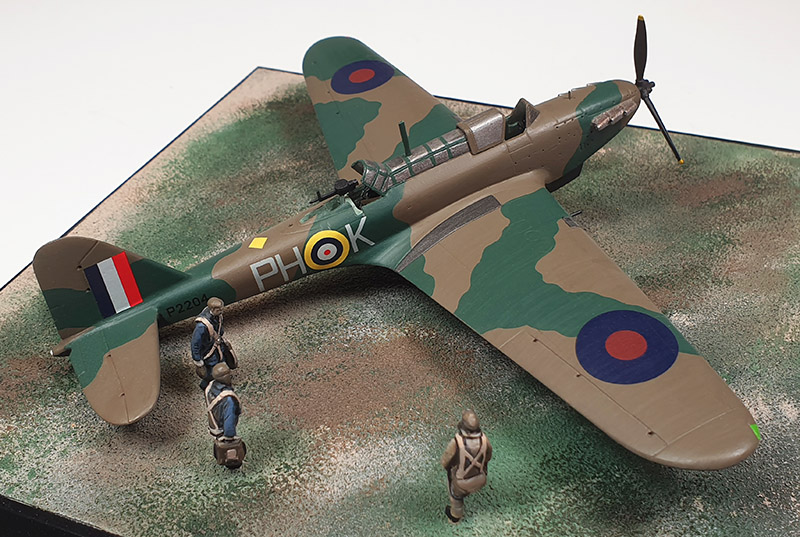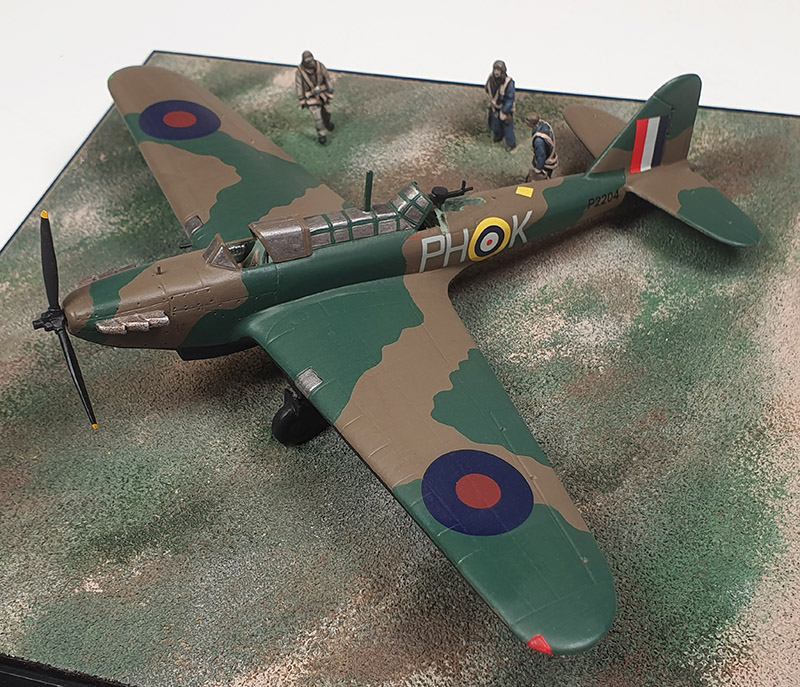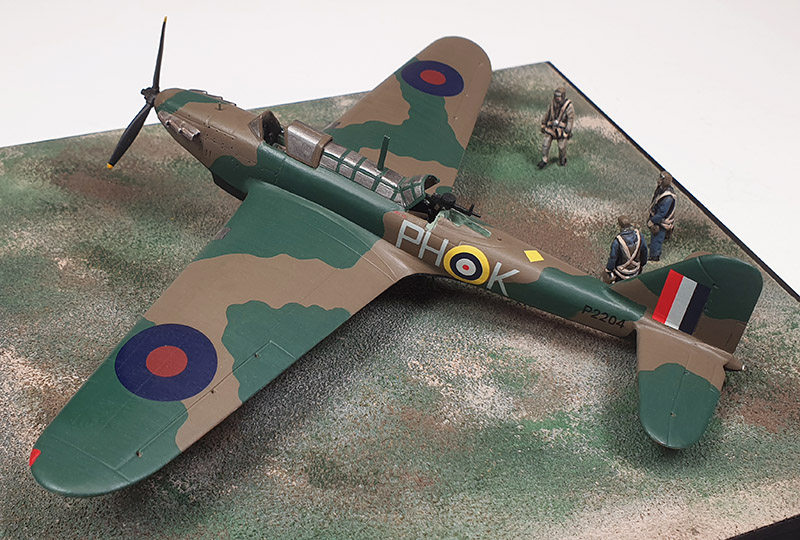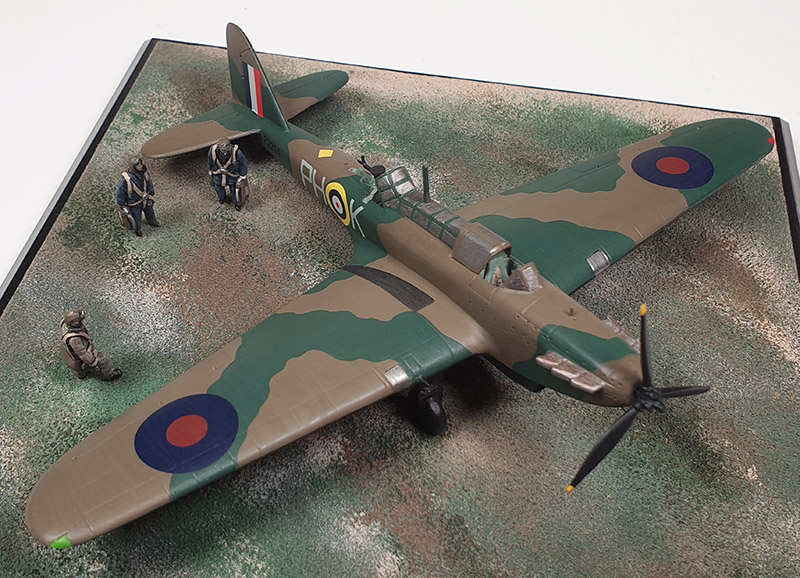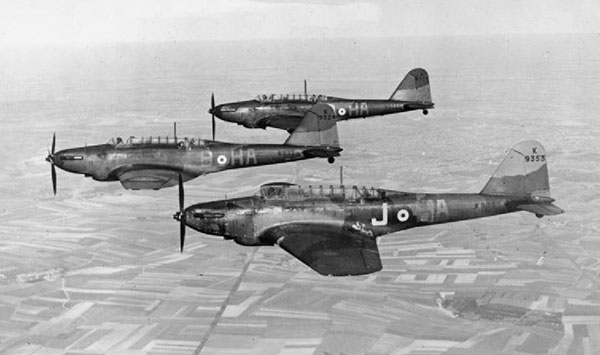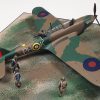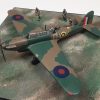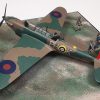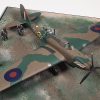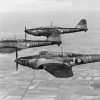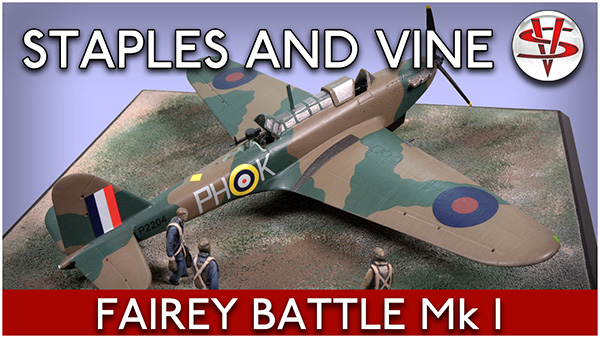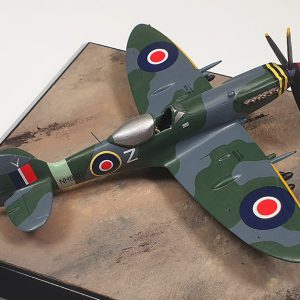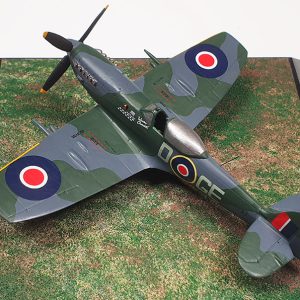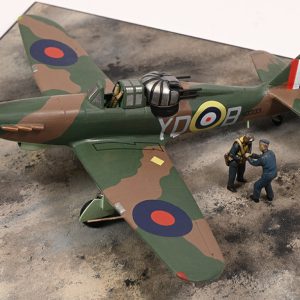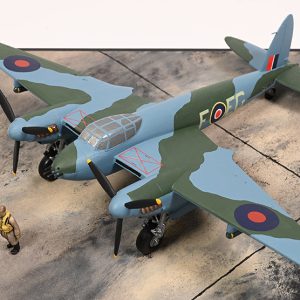Fairey Battle Mk I P2204 PH-K 12 Squadron,
Fg Off D E Garland, Sgt T Gray, LAC L R Reynolds
Veldwezelt Bridge, Albert Canal, 12 May 1940
FIND OUT MORE ABOUT THE FAIREY BATTLE MK I
ON MY YOUTUBE CHANNEL BELOW
The origins of the Fairey Battle were in Air Ministry specification P.27/32, intended to produce a more modern successor to the Hawker Hart light bomber, with a similar two man crew. It was felt by the manufacturers that current engines were not powerful enough to fulfil the requirements imposed by the Air Ministry. Sadly the Air Ministry had totally misread the climate for operational aircraft in the 1930s and this was to prove costly in aircraft and crew. The specification produced responses from seven manufacturers, including three designs from Fairey. The first prototype of the selected Fairey design was ordered in June 1934. With the prototype designed by Belgian Marcel J O Lobelle, Fairey were aware that the requirements for the aircraft imposed by the Air ministry were hopelessly optimistic, even submitting alternative designs hoping for a change of specification. Originally Fairey had planned for their own P12 engine to power the new aircraft but as it was not sanctioned by the government they turned to the Rolls Royce PV-12 which later became the famous Merlin. Redesign work was underway when the Air Ministry decided a dedicated bomb-aimer should be added to the crew. A bomb load of four 250lb bombs could be carried housed within the wings, and a further two 250lb bombs carried on external racks.
The first flight of the bomber took place on the 10th of March 1936 at the Great West Aerodrome near the village of Heathrow with Chris Staniland at the controls. Testing by the Aeroplane and Armament Experimental Establishment at Martlesham Heath gave no serious criticisms but performance was unsurprisingly disappointing. The new aircraft was named ‘Battle’ on April 2nd 1936 it is said as a result of C. R. Fairey’s continual ‘battles’ with the Air Ministry to adopt a twin-engined design.
At this stage the RAF had little interest in the design but as the Air Ministry had placed orders without seeing a prototype, to speed up the timescale. Re armament was desperately needed and as the international situation worsened they were faced with no alternative. Deliveries to the RAF started in May 1937, and by 1939 eighteen squadrons were equipped with the Battle.
12 Squadron had converted to the Battle in February 1938, and on the 2nd of September 1939 – a day before the declaration of war – the squadron flew from Bicester to Berry-au-Bac in the Reims area of France. There they joined 9 other Battle squadrons as part of the Advanced Air Striking Force. Until early May 1940 operations had been limited and sporadic, principally armed reconnaissance and leaflet-dropping , but it was not long before the vulnerability of the Battle was exposed. Sortie after sortie saw heavy losses of aircraft and crew.
With the rapid advance of the German forces across Europe the task of holding them back was becoming ever more desperate. On 10 May 1940, it became clear that the Britain had no confidence in Chamberlain’s prosecution of the war and so he resigned. Capitalising on the chaos in the British government, German forces pushed on into France by a lightning advance through the Low Countries.
It was determined that an attempt should be made to halt the German army at the Albert Canal near the River Meuse giving allied forces the chance to regroup and counter attack. The Germans had constructed several pontoon bridges allowing troops to flow from Holland into Belgium over the rivers but there was one key bridge at Maastricht which if destroyed could stem the flow of armour fuel and supplies. Belgian forces had bravely defended the bridges against German glider paratroops, and Ju 87 stuka dive bombers, but were eventually forced to surrender in the face of overwhelming odds. The German forces captured the Veldwezelt Bridge intact removing the detonation wires, they now installed batteries of anti-aircraft guns to keep it open to their advancing troops.
Orders were received by 12 squadron based at Amifontaine at 0700 on the 12th of May for six volunteer crews to attack the bridges across the Albert Canal at Veldwezelt and Vroenhoven. One aircraft, and its spare, had radio unserviceability, so the sortie was launched with a pair, and a three, escorted by Hurricanes. The three were led by Flying Officer Garland in PH-K P2204 with Sergeant Grey as observer and Leading Aircraftsman Reynolds as Wireless Operator/Air Gunner. The second section made a low-level attack on the Veldwezelt bridge to be met by intense and well-prepared anti-aircraft fire, reputedly from up to three hundred guns of all calibres; after dropping their bombs Garland’s aircraft crashed near the bridge the whole crew being Killed. Garland and Gray were subsequently awarded posthumous Victoria Crosses. What follows is the citation.
Flying Officer Garland was the pilot and Sergeant Gray was the observer of the leading aircraft of a formation of five aircraft that attacked a bridge over the Albert Canal which had not been destroyed and was allowing the enemy to advance into Belgium. All the aircrews of the squadron concerned volunteered for the operation, and, after five crews had been selected by drawing lots, the attack was delivered at low altitude against this vital target. Orders were issued that this bridge was to be destroyed at all costs. As had been expected, exceptionally intense machine-gun and anti-aircraft fire were encountered. Moreover, the bridge area was heavily protected by enemy fighters. In spite of this, the formation successfully delivered a dive-bombing attack from the lowest practicable altitude. British fighters in the vicinity reported that the target was obscured by the bombs bursting on it and near it. Only one of the five aircraft concerned returned from this mission. The pilot of this aircraft reports that besides being subjected to extremely heavy anti-aircraft fire, through which they dived to attack the objective, our aircraft were also attacked by a large number of enemy fighters after they had released their bombs on the target. Much of the success of this vital operation must be attributed to the formation leader, Flying Officer Garland, and to the coolness and resource of Sergeant Gray, who in most difficult conditions navigated Flying Officer Garland’s aircraft in such a manner that the whole formation was able successfully to attack the target in spite of subsequent heavy losses. Flying Officer Garland and Sergeant Gray did not return.
These were the first Victoria Crosses awarded to the RAF in the Second World War. The gunner, Leading Aircraftman Reynolds, the third member of the crew, did not receive a medal because he was not in a “decision making” position. Gunners were not given SNCO rank until 27 May, 1940, possibly as a belated reaction to the action in France.
Battle operations from French bases continued until the 15th of June with further heavy losses, when the remaining aircraft and personnel were withdrawn. 12 Squadron returned to Harwell with eight aircraft. Together with three other RAF squadrons and four Polish Battle Squadrons they carried out attacks against Hitler’s invasion barges and troops preparing for operation Sealion.


